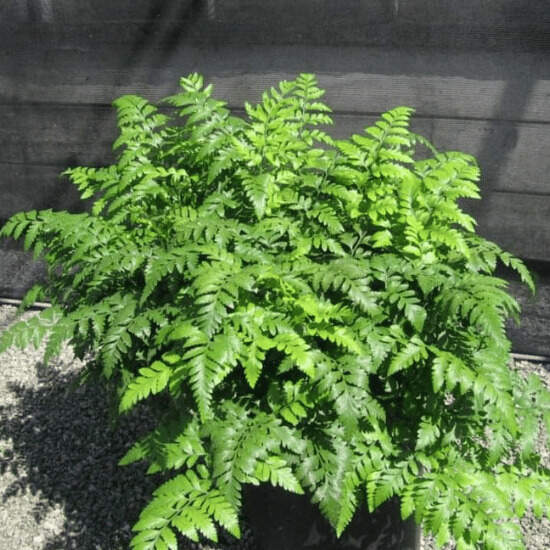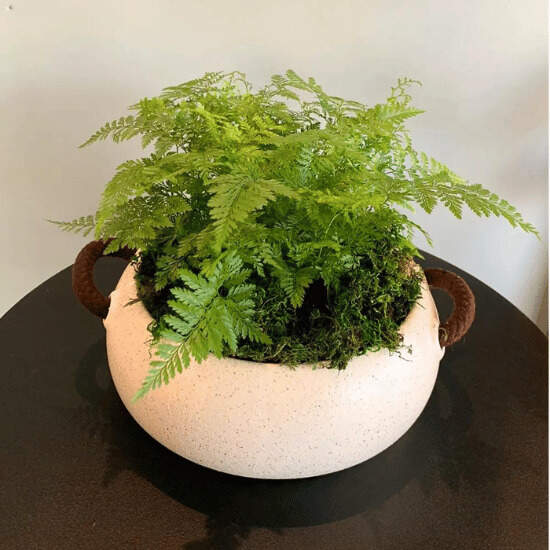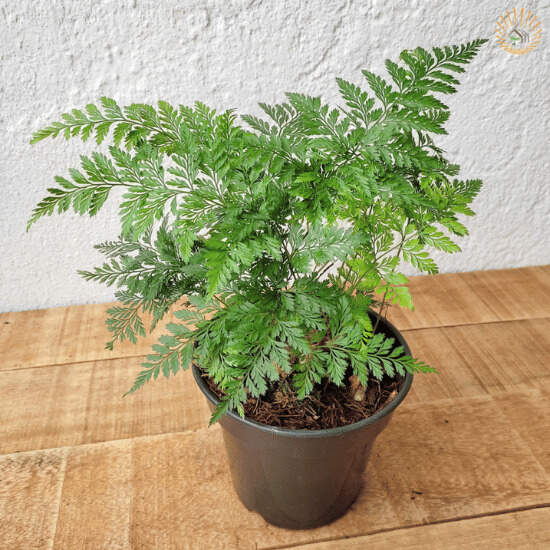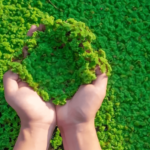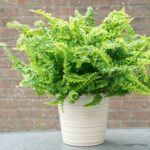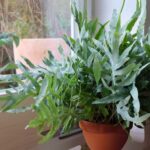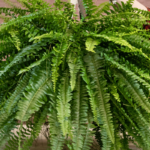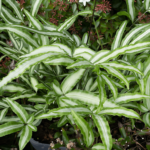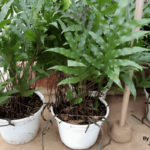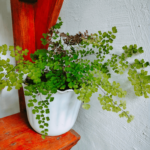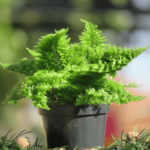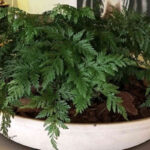Popularly known as Leatherleaf fern, Rumohra Adiantiformis is a plant famous in many countries.
Thanks to its tough leaves, which remain green and vibrant for a long time after being cut, this plant is an excellent choice for making arrangements.
Keep reading, as in this article, you will discover the special characteristics of this plant and how to cultivate it.
Characteristics of Leatherleaf fern
“Rumohra Adiantiformis,” nicknamed Leatherleaf fern due to the texture of its leaves, can be found in countries in Africa, Oceania, Central America, and South America.
This plant has rhizomes covered in dark hairs, from which its attractive leaves sprout. It’s worth noting that Rumohra Adiantiformis is not toxic to dogs or cats.
When properly cultivated, it can reach almost 1 meter in height and live for more than 20 years.
Today, this fern is commercially produced in various regions of the world, especially in Florida (USA), South Africa, and Brazil, especially in the southern region.
An interesting curiosity is that the genus Rumohra was named in honor of Dr. Carolus de Rumohr Holstein.
How to Care for Leatherleaf fern
Rumohra Adiantiformis can be cultivated in your home or garden, provided you give it the proper care.
The following are seven simple steps to ensure the healthy cultivation of this plant.
1 – Place it in the Right Location
This plant can be grown both indoors and outdoors.
When choosing the location for cultivation, it is essential to ensure that the climatic conditions are suitable for its growth, and we will address this in more detail later.
You can cultivate this plant in various places, including:
- Under the canopy of trees.
- In pots or hanging arrangements.
- On shelves.
- In gardens.
- On balconies.
- In garages.
- In courtyards.
Furthermore, it is an excellent choice for indoor environments, as it helps purify the air.
You can place it in different rooms such as bedrooms, living rooms, bathrooms, offices, etc.
2 – Temperature and Ventilation
A suitable temperature is crucial for the development of any fern.
Leatherleaf fern, like Monarch Fern or Boston fern, thrives best at temperatures between 15°C to 25°C (59°F to 77°F).
Regarding ventilation, avoid placing it in very windy environments or stuffy areas. Exposure to strong winds, which can damage the plant and result in leaf drop, and stuffy locations can promote disease.
Ideally, it should have gentle airflow.
3 – Humidity and Watering
Leatherleaf fern should be cultivated in environments with high humidity; otherwise, it may develop wilted leaves with brown tips.
To maintain your Rumohra Adiantiformis in a humid environment, you can:
- Place a tray of water under the pot.
- Keep it away from air-conditioned environments.
- Spray the leaves of your plant on drier days.
- Place it near the bathroom.
- Cultivate it near plants that increase the humidity of the environment.
You should water your Leatherleaf fern as soon as the soil or substrate dries out.
To check this, do the following:
- Touch the soil
- If your finger gets dirty after touching it, there’s no need to water as the soil is still moist.
- Watering should occur when the substrate is dry or almost dry.
When watering, avoid soaking the soil.
4 – Lighting
Leatherleaf fern is a plant that does not tolerate direct sunlight.
It is best to place it where it receives plenty of indirect light but is protected from direct sunlight.
Direct exposure to sunlight can scorch its leaves and hinder its development.
5 – Ideal Soil
The ideal soil for Rumohra Adiantiformis should have good drainage and be rich in organic material.
We recommend using specific fern mixtures available for sale in specialized stores, but there are also other materials you can use in your soil.
- Construction sand.
- Peat moss.
- Sand.
- Coconut fiber.
- Pine bark.
- Worm compost.
- Ordinary soil.
- Crushed charcoal.
To facilitate drainage, remember to use pots with holes at the base.
6 – Fertilization
Fertilization plays a crucial role in plant development. There are 2 types of fertilizers you can use for your Leatherleaf fern.
- Chemical: They are absorbed quickly, but if used excessively, they can hinder your fern’s growth.
- Organic: Easier to use but do not provide full control over the nutrients you will provide to your plant.
Fertilization should be done during the growth period of your Rumohra Adiantiformis, which typically occurs from early spring to late summer.
If you choose to use chemical fertilizers, some options include:
- NPK 20 20 20.
- NPK 12 08 06.
- Fertilizers specifically designed for ferns.
Remember to follow the packaging instructions to fertilize correctly and in the right amount.
Some options for organic fertilizers are:
- Bokashi.
- Castor cake.
- Ground eggshells.
- Bone meal.
- Worm castings.
7 – Repotting, Propagation, and Pruning
Repotting should be done when your Portuguese lace fern has outgrown its current pot, typically every 2 or 3 years.
To perform this procedure, you should:
- Remove your plant from the pot.
- Clean its roots of the old substrate.
- Choose a larger pot to plant your fern.
- Add substrate to the new pot and plant your Rumohra Adiantiformis.
Below is a video that explains in more detail how to repot a fern.
Regarding propagation, you can obtain new ferns from your Leatherleaf fern through clump division or spores.
During clump division, basically, during the repotting process, after cleaning the roots of the old substrate, you can divide your plant into two or more.
Propagation by spores is more complicated and can take months before you see the first growth of your fern planted from spores, so we recommend multiplying your plant through clump division.
Pruning is straightforward; from time to time, remove old or dead leaves from your fern.
Frequently Asked Questions
What pests attack this plant? Typically, Leatherleaf fern and other ferns in general are attacked by mealybugs, caterpillars, mites, aphids, etc.
Does it produce flowers? No.
Is it toxic to dogs or cats? No.
Conclusion
I hope that with this article, you have learned a bit more about the characteristics and how to cultivate the Leatherleaf fern.
Remember that these are easy-to-care-for plants but also require certain care to remain healthy.
If you want to learn more about other ferns, check out the articles below:

